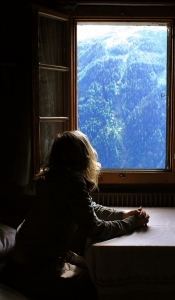There are many practices of prayer in the Christian life: prayers of petition, intercession, praise, worship, and others. One of those prayers that I think is important for the Christian is a regular time of prayer that helps us to confess our sins and receive forgiveness. One such prayer is traditionally called the prayer of examen. Developed in the 15th century by St. Ignatius of Loyola, it has been used for centuries as a way to reflect on the day’s activities and give it over to God. This might involve ways of seeing God’s movement in the day, or it might be a way to release troubles or challenges we faced that day. Traditionally this prayer begins with acknowledging God’s presence. It continues with gratitude and reviewing the day and ends with asking God to show us how He wants you to respond.
The prayer of examen is not explicitly found in Scripture but the principles are certainly biblical. This practice has made a comeback in recent years as many Christians, especially Evangelicals, have been drawn to a deeper prayer life. Unfortunately, most of the versions I’ve seen omit what I think is critical for Christian formation – and that is regular confession of sin and receiving of forgiveness. One writer talks about the “two doors” to this prayer – the first being an examen of consciousness (being aware of God’s presence with us) and the second an examen of conscience (where we have fallen short).
I have found as well that most of us are probably able to identify sin in our lives but don’t know what to do about it other than feel guilty, so we just tend to ignore it. But our life with Christ is shallow without this practice of confession because this is the heart of the gospel and the very thing our baptisms and the Communion Table speak to – taking our place in Christ’s death and in His resurrection!
Leanne Payne in The Healing Presence quotes William Barclay as he reminds us: “An easy-going attitude to sin is always dangerous. It has been said that our one security against sin lies in our being shocked at it. Carlyle said that men must see the infinite beauty of holiness and the infinite damnability of sin. When we cease to take a serious view of sin we are in a perilous position. It is not a question of being critical and condemnatory; it is a question of being wounded and shocked. It was sin that crucified Jesus Christ. It was to free men from sin that he died. No Christian should take an easy-going view of it”.
This is also why I believe this prayer should always include an intentional receiving of Christ’s work on the Cross for that sin, for that struggle. We need to receive forgiveness! Perhaps it might better be said that we need to walk into the forgiveness of sin that Christ died for. He died once and for all time, but we often fail to hold onto that reality and so regular confession of sin and its resulting forgiveness becomes a way for us to apply His work to our lives.
For that reason, I am calling this regular practice of prayer – Confessional Prayer. It follows the principles of the prayer of examen but allows us to embrace our freedom in Christ through its adherence to dealing with sin.
There are four steps to this prayer. I’m including scriptures that I hope will help you go through each step
The steadfast love of the LORD never ceases, his mercies never end; they are new every morning, great is your faithfulness
Lamentations 3:22-23
Begin by centering your heart in God’s presence… “The Lord is near to all who call on Him, to all who call on Him in truth.” Psalm 145.8. Give thanks to Him that you do not need to hide anything from him. Affirm that He is faithful and good, and his mercy and grace are “new every morning.”
Ask the Spirit to show you any sin you need to bring to Christ. Bring that to your confession. The list of questions listed below might help.
“Search me O God and know my heart, test me and know my thoughts. See if there is any wicked way in me and lead me in the way everlasting.” Psalm 139:23-24
As the Holy Spirit is revealing those things you need to bring to Christ, simply confess as specifically as you can the sins that trouble you. Don’t rush through this process. Simply rest in God’s presence as He does this.
Now choose to let this go and receive Christ’s forgiveness for you. Remember:
If we confess our sins, he is faithful and just to forgive us our sins and to cleanse us from all unrighteousness. (1Jo 1:9 ESV)
And finally commit this confession to the Lord. As you rest in his forgiveness ask him how to walk this out. Ask for the supernatural power of His Spirit to give you what you need to move forward. Thank him that:
“[you] have been crucified with Christ. It is no longer [you] who live, but Christ lives in [you]” (Gal. 2:20).
I’m including at the end of this explanation a series of questions that you might find helpful in this prayer. At the same time, we are not called to introspect and try and find all those “hidden sins” we think must be there deep in our unconscious minds. I agree with the author of this quote: “The Examen is not primarily concerned with good or bad actions but with the impulses that drive them”. At the same time, making this prayer a regular practice of our prayer life will help us more quickly identify our diseased sins and attitudes.
In some weeks of this guide, I will include ways that this prayer might help us with the themes of that week. At other times, it will simply stand on its own.
“The act of penitence and the reception of pardon are definite acts – a very real transaction with God, and we fail in this when we turn from God to seek feelings or states of our own minds.”
Leanne Payne, Real Presence
I want to return to why guilt and shame can keep us from this practice of confession and pardon. It has to do with the distinction between our feelings about the guilt or shame and the objective act of confession itself. C.S. Lewis struggled much of his life with introspection, the drowning as it were, in the waters of subjectivity. He, like many of us, believed that his feelings about his sins were the most important thing about them. And because of that, he had a hard time trusting the act of receiving forgiveness for his sins. He might confess his sin and try to “receive” pardon, but the guilt would remain in his unconscious mind and pop up at the worst times! When that happens to us I think we believe that if we don’t hold onto the guilt or shame then we are not sufficiently repentant. Lewis would go on to conquer this bad habit and entered joyfully into confession and pardon!
Confession and pardon are acts of the will and are not to be swallowed up by our feelings or subjective beliefs. Quoting Leanne Payne here – “The act of penitence and the reception of pardon are definite acts – a very real transaction with God, and we fail in this when we turn from God to seek feelings or states of our own minds.” (I highly recommend reading Real Presence by Leanne Payne, chapter 6 and or looking up what Lewis wrote about this subject). When we find that we can be honestly objective about both the sin and the pardon- it lifts a weight off our souls that is incredibly freeing.
Helpful Questions for Examining your Heart
- Where have I been drawn into the mindset of the world?
- Where were/are my thoughts and desires not ordered toward God?
- Where have I resisted the voice of God in this season of my life?
- Is there a part of my heart/life that I keep back from God? a place I am unwilling to surrender?
- Do I compare myself to others? Either in ways that convince me I will never measure up? or in ways that make me feel superior?
- Where did I consciously sin today?
- What patterns of sin do I struggle with these days?
- How have I failed in love?
- How have I failed in obedience to Christ?





